Hops in Beer Brewing: Melba
Published: July 28, 2025 at 6:35:39 AM UTC
Melba hops, hailing from Australia's Ellerslie breeding program, have quickly become a favorite among homebrewers. Their versatility in beer brewing is unmatched. This variety is celebrated for its dual-use capabilities, making it a top pick for craft brewers. The distinct traits of Melba hops open up a world of possibilities for brewers. They can craft everything from hop-forward ales to perfectly balanced lagers. By grasping the history, chemical makeup, and flavor profile of Melba hops, brewers can explore new horizons in their craft.
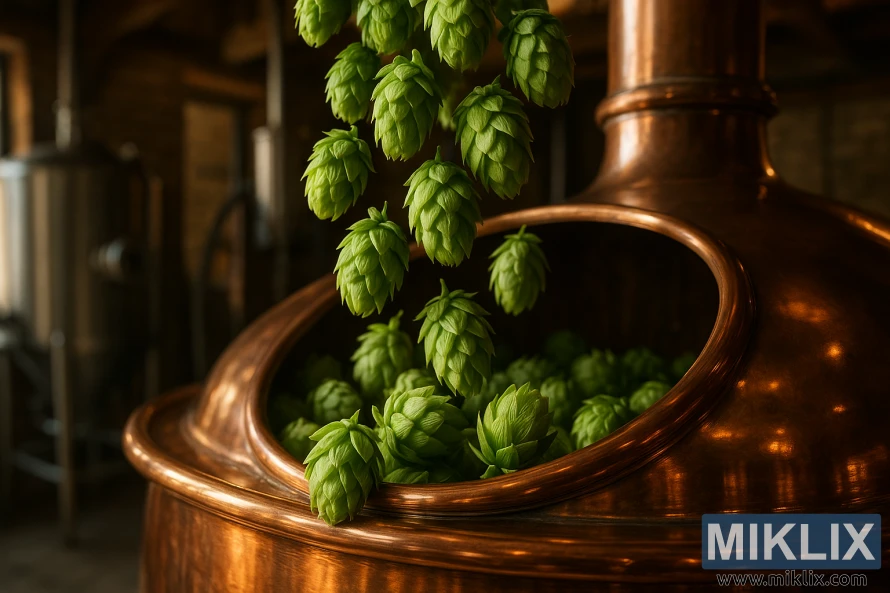
Key Takeaways
- Melba hops offer dual-use capabilities for brewing.
- Originating from Australia, they bring a unique flavor profile.
- Ideal for both hop-forward ales and balanced lagers.
- Understanding Melba hops' characteristics enhances brewing creativity.
- Versatile for various beer styles and recipes.
Introduction to Melba Hops
Melba hops are a recent innovation in beer brewing, hailing from the Ellerslie breeding program. This program has been key in creating new hop varieties to meet brewers' evolving needs. Melba hops stand out for their unique traits and versatility in brewing.
The Ellerslie breeding program, renowned for its innovative hop development, has been instrumental in Melba hops' creation. It aimed to develop hops for both bittering and flavor/aroma roles. Melba hops embody this vision, providing brewers with a flexible ingredient for diverse beer styles.
Melba hops have swiftly become favorites among homebrewers and commercial brewers. Their popularity stems from their balanced alpha acid content and distinctive flavor profile. Here are some key points about Melba hops:
- Developed by the Ellerslie breeding program
- Known for their dual-purpose capabilities
- Offers a balanced alpha acid content
- Unique flavor and aroma profile
- Gaining popularity among homebrewers and commercial brewers alike
Melba hops' versatility makes them an exciting addition to hop varieties. As brewers explore new recipes and techniques, Melba hops are set to become a staple in many breweries.
Essential Characteristics of Melba Hops
Melba hops are distinguished by their high oil content and specific acid percentages, making them a standout in brewing. They are closely related to Galaxy hops, sharing many traits that brewers value. Their high oil content greatly impacts the flavor and aroma of beers.
The high oil content in Melba hops leads to a complex, fruity aroma. This makes them ideal for brewers aiming to craft beers with unique flavors. Their specific alpha and beta acid percentages also contribute to balanced bitterness and flavor stability.
- High oil content for enhanced aroma
- Specific alpha acid percentage for balanced bitterness
- Beta acid percentage contributing to flavor stability
Melba hops are prized for their ability to add a distinctive, intense flavor to beers. Their unique physical and chemical characteristics make them versatile for various brewing needs. They are suitable for both traditional ale recipes and modern craft beer creations, allowing brewers to experiment and innovate.
For brewers aiming to unlock Melba hops' full range, understanding their essential characteristics is key. By harnessing Melba hops' unique traits, brewers can craft a wide variety of beers that appeal to different tastes and preferences.
Chemical Composition and Brewing Properties
Grasping the chemical makeup of Melba hops is critical for successful beer brewing. Melba hops boast a unique chemical profile. This profile greatly impacts their brewing characteristics.
The alpha acid content in Melba hops spans from 8.0% to 12.1%. Beta acid content ranges from 2.0% to 5.5%. Alpha acids are key in adding bitterness to beer. Beta acids, on the other hand, influence the flavor and stability of the brew.
The co-humulone percentage and total oil content are also essential in Melba hops' chemical makeup. Co-humulone's impact on bitterness quality is significant, with higher levels potentially causing a harsher taste. The total oil content, by contrast, shapes the hop's flavor and aroma.
When brewing with Melba hops, it's vital to understand these chemical properties. This knowledge is essential for achieving the desired flavor and bitterness levels. By utilizing Melba hops' unique traits, brewers can craft a variety of beer styles. These styles highlight the hop's versatility.
- Alpha acid content: 8.0-12.1%
- Beta acid content: 2.0-5.5%
- Co-humulone percentage: affects bitterness quality
- Total oil content: influences flavor and aroma
By thoughtfully considering these factors, brewers can refine their techniques. This ensures the best use of Melba hops. The result is high-quality beers that meet their exacting standards.
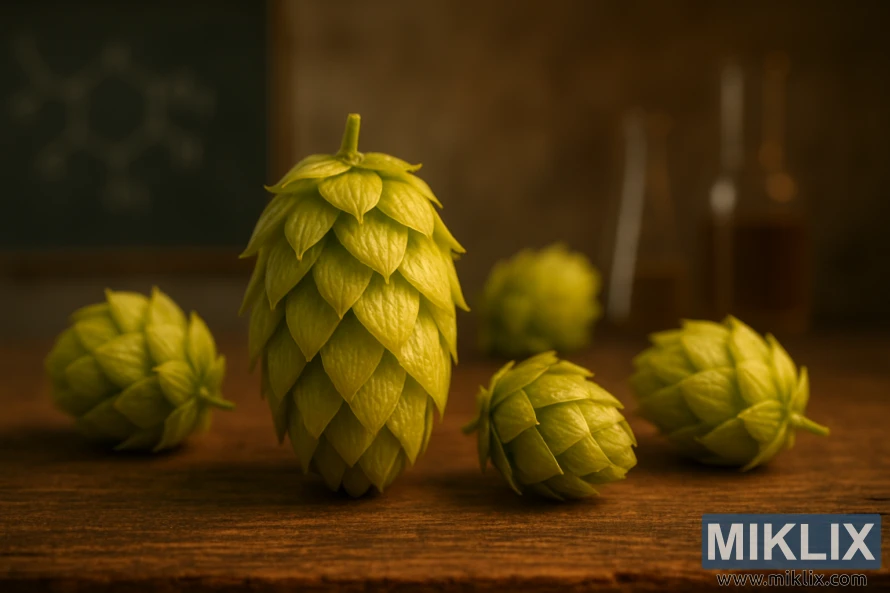
Aroma and Flavor Profile
Brewers often choose Melba hops for their exceptional aroma and flavor. These hops are known for their pronounced notes of passionfruit, grapefruit, and citrus. This makes them versatile for a wide range of beer recipes.
Early in brewing, Melba hops add a clean, spicy bitterness. Their complex flavor is fully revealed when used for flavor or aroma additions. This results in a beer with a rich, fruity taste and a crisp finish.
The aroma of Melba hops is truly remarkable. Brewers love the intense fruit notes they bring to beer. Whether in IPAs, pale ales, or other styles, Melba hops add depth and complexity. This enhances the overall drinking experience.
- Passionfruit and grapefruit notes are prominent in Melba hops, contributing to their popularity in modern beer brewing.
- The citrus flavor adds a bright, refreshing quality to beers brewed with Melba hops.
- Melba hops are versatile and can be used in a variety of beer recipes to achieve different flavor profiles.
Understanding Melba hops' aroma and flavor helps brewers craft unique, delicious beers. These beers showcase the characteristics of Melba hops, making each sip a memorable experience.
Best Beer Styles for Melba Hops
Melba hops are a versatile ingredient, perfect for elevating various beer styles. They add a strong aromatic profile, making them ideal for brewers aiming to craft complex and aromatic beers.
These hops are a great match for IPA and pale ale. Their aromatic properties significantly enhance the beer's flavor profile. Some popular styles that benefit from Melba hops include:
- India Pale Ale (IPA)
- Pale Ale
- Session IPA
- American Wheat Beer
Brewers can also mix Melba hops with other varieties to create unique flavors. This approach adds depth and complexity, making the beer more intriguing. The goal is to balance the flavors so Melba hops complement the other ingredients without dominating them.
Understanding the best beer styles for Melba hops opens up new possibilities for brewers. Whether crafting a traditional IPA or exploring new recipes, Melba hops are a valuable asset in your brewing arsenal.
Timing Your Melba Hop Additions
To maximize Melba hops' benefits, brewers must grasp the timing of hop additions. These hops are versatile, suitable for early, late, and dry hopping. Each method yields distinct flavor and aroma profiles.
Early hop additions are made during the boil's first 60 minutes. This method adds bitterness to the beer. Melba hops can enhance this bitterness with their unique character.
Late hop additions are added towards the boil's end, usually in the last 15 minutes. This technique enriches the beer's flavor and aroma. Melba hops excel in this role, adding a distinct taste and scent.
Dry hopping, done after the boil, typically during or after fermentation, focuses on aroma without bitterness. Melba hops are ideal for this, bringing a complex and unique aroma to the beer.
- Early hop additions: contribute bitterness, used within the first 60 minutes of the boil
- Late hop additions: contribute flavor and aroma, used within the last 15 minutes of the boil
- Dry hopping: contribute aroma, used after the boil
By mastering these brewing techniques and timing Melba hop additions, brewers can craft beers with a wide array of flavors and aromas.
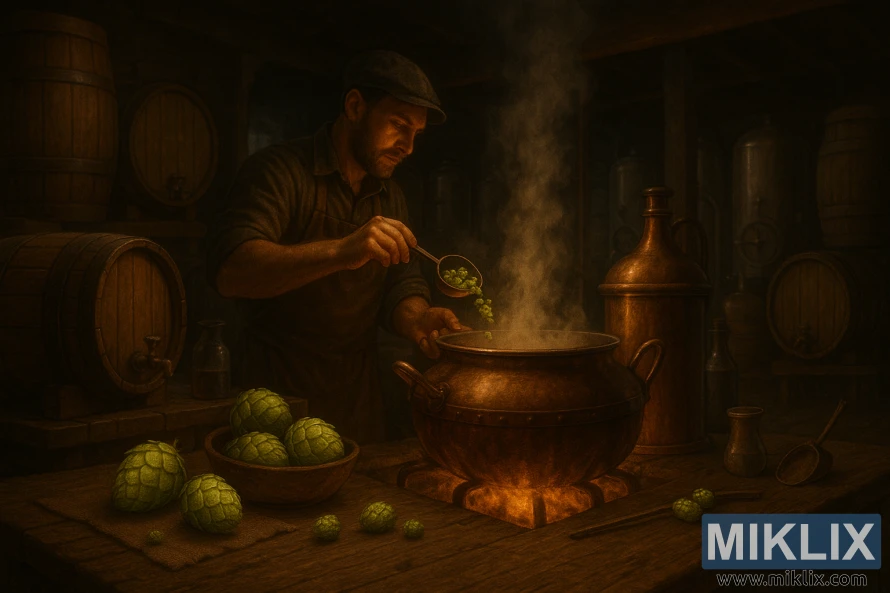
Single Hop Brewing with Melba
For brewers aiming to highlight Melba hops, single hop brewing is a top choice. This method lets Melba's unique traits and flavor profile shine. It results in beers that distinctly showcase this hop variety's qualities.
Single hop brewing with Melba offers several advantages. It streamlines the brewing process, eliminating the need to balance multiple hops. This is perfect for brewers eager to explore new hop flavors without the complexity of blending.
Yet, single hop brewing comes with its own set of challenges. Achieving a balanced flavor is a key difficulty. Melba hops have a distinct aroma and flavor. Brewers must carefully adjust the amount used to prevent overpowering the beer.
To brew successfully with Melba hops, consider these tips:
- Begin with a small amount of hops and adjust to taste to avoid overpowering the beer.
- Experiment with different brewing techniques, such as dry-hopping, to enhance the flavor and aroma.
- Pair Melba hops with complementary ingredients to create a balanced flavor profile.
By adhering to these guidelines and experimenting with single hop brewing using Melba hops, brewers can craft unique and flavorful beers. These beers will showcase the exciting characteristics of this hop variety.
Combining Melba Hops with Other Varieties
Melba hops offer a unique opportunity to blend with other varieties, crafting complex and unique flavor profiles. This versatility makes them an excellent choice for many beer recipes.
By pairing Melba hops with other varieties, brewers can explore interesting hop substitutions and combinations. For example, combining Melba with Galaxy and Citra hops can create beers with fruity and citrus notes.
- Melba + Galaxy: Adds tropical fruit flavors and aromas.
- Melba + Citra: Introduces citrus and stone fruit notes.
- Melba + Mosaic: Creates a complex profile with fruit and herbal hints.
When experimenting with different hop combinations, brewers must consider the brewing properties and flavor profiles of each hop. This ensures a balanced flavor in the final product.
The advantages of combining Melba hops with other varieties include:
- Enhanced complexity in the beer's flavor profile.
- The ability to create unique beers that stand out.
- Flexibility in brewing, allowing for a range of styles and flavors.
Understanding how to effectively combine Melba hops with other hop varieties allows brewers to expand their brewing repertoire. This leads to the creation of innovative beers.
Common Brewing Mistakes to Avoid
Melba hops can elevate your beer, but only if you avoid common brewing mistakes. Brewers using Melba hops should be aware of the pitfalls that can impact beer quality.
One of the most significant mistakes brewers make is incorrect hop additions. Adding hops at the wrong time or in the wrong amount can drastically alter flavor and aroma. It's essential to understand the brewing process and Melba hops' role in it.
Here are some common brewing mistakes to watch out for when using Melba hops:
- Inadequate sanitation: Failing to properly sanitize equipment can lead to contamination and spoilage.
- Incorrect hop storage: Storing hops improperly can cause them to lose potency and flavor.
- Over-hopping: Adding too many hops can result in a beer that's overly bitter or aromatic.
By being aware of these common mistakes, brewers can take steps to avoid them. This way, they can produce high-quality beers that showcase Melba hops' unique characteristics.
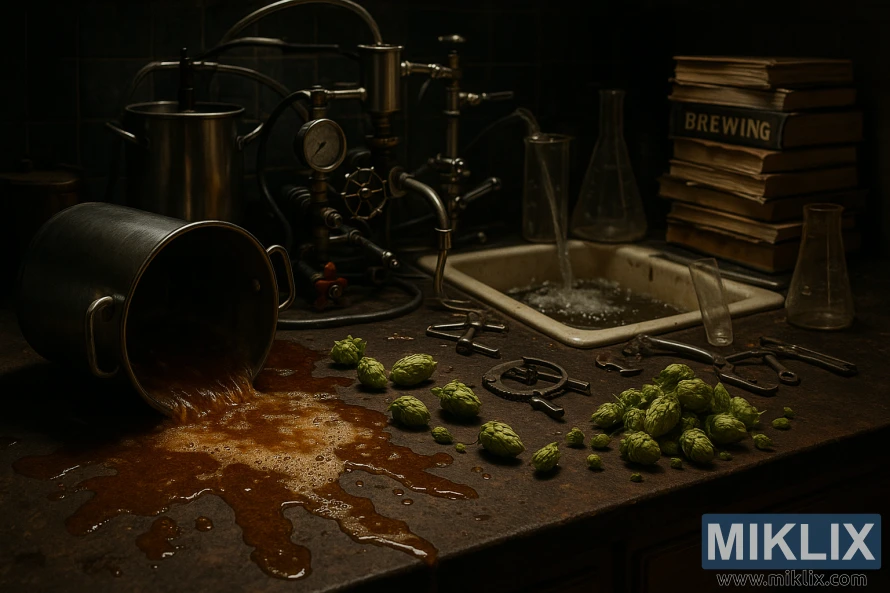
Storage and Preservation Methods
To preserve the distinct characteristics of Melba hops, brewers must employ effective storage and preservation methods. Proper storage and handling techniques are essential for maintaining the quality and flavor of Melba hops.
Refrigeration is one of the most effective ways to store Melba hops. Keeping the hops at a low temperature slows down the degradation process. This preserves their alpha acids and essential oils. Vacuum-sealing the hops or storing them in airtight containers prevents exposure to oxygen. Oxygen can cause the hops to lose potency and flavor.
Proper sanitation and cleaning techniques are also critical in preventing contamination and spoilage. Brewers should ensure that all equipment and storage containers are thoroughly cleaned and sanitized before use. This includes:
- Regularly cleaning and sanitizing storage containers and equipment
- Using airtight containers to prevent exposure to oxygen and moisture
- Labeling and dating stored hops to ensure that the oldest hops are used first
By implementing these storage and preservation methods, brewers can maintain the quality and flavor of Melba hops. This ensures that their beers are consistently flavorful and aromatic.
Commercial Brewing Applications
Melba hops are increasingly used in commercial brewing, mainly for IPAs and pale ales. Their distinct flavor and aroma are highly sought after by craft beer lovers.
Melba hops bring several benefits to commercial brewers. They can elevate the quality and uniqueness of various beer styles. Here are some key advantages:
- Unique flavor and aroma profiles that can differentiate beers in a competitive market.
- Versatility in brewing applications, from IPAs to pale ales and beyond.
- Potential for creating signature beers that can become brand identifiers.
Despite the benefits, using Melba hops in commercial brewing comes with challenges. These include sourcing high-quality hops, managing inventory, and ensuring consistency across batches. To overcome these challenges, brewers can adopt several strategies:
- Establish relationships with reputable hop suppliers to ensure a consistent supply of high-quality Melba hops.
- Invest in proper storage facilities to preserve the quality of the hops.
- Develop and adhere to strict quality control measures to ensure consistency in brewing.
By understanding the benefits and challenges of using Melba hops, commercial brewers can make informed decisions. This can lead to the creation of unique, high-quality beers that appeal to discerning consumers.
Seasonal Considerations for Melba Hop Brewing
Seasonal brewing with Melba hops offers a chance to craft unique, flavorful beers that match the seasons. Brewers can use Melba hops in various ways to create beers that are not just tasty but also timely.
Melba hops are ideal for summer and fall beers. In summer, their citrus and floral notes are perfect for refreshing ales and lagers. For fall, they add depth and complexity, complementing the season's rich flavors.
Seasonal brewing techniques allow brewers to experiment with hop addition times. For instance, adding Melba hops in the late boil or whirlpool enhances the beer's aroma. Dry-hopping can intensify flavor notes.
Some popular seasonal beer styles with Melba hops include:
- Summer ales and lagers with citrus and floral notes
- Fall IPAs and pale ales with complex, malty flavors
- Winter warmers and stouts with deep, rich flavors
- Spring refreshers with bright, hoppy flavors
Seasonal brewing with Melba hops has its benefits and challenges. Brewers must plan their hop inventory and brewing schedule carefully. They also need to adjust recipes based on the hop's alpha acid content and other characteristics, which can vary annually.
Understanding Melba hops' characteristics is key to creating diverse beers for all seasons. Whether for a summer festival or a fall harvest, Melba hops are a valuable asset for brewers.
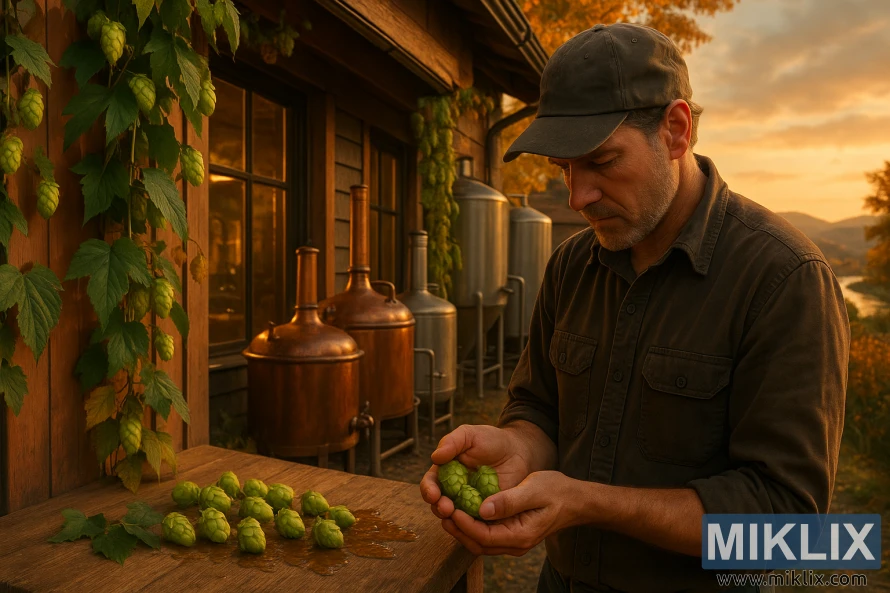
Troubleshooting Common Issues
To achieve the best results with Melba hops, brewers must be aware of common brewing issues and how to resolve them. The process of brewing with Melba hops is complex. Several factors can impact the final product.
One common issue is off-flavors. These can stem from contamination, improper hop storage, or incorrect brewing techniques. Proper sanitation of equipment and cool, dry storage of hops can help mitigate these problems.
Poor fermentation is another frequent issue. It can result from inadequate yeast pitching rates, incorrect fermentation temperatures, or insufficient nutrients. Monitoring fermentation temperatures and ensuring proper yeast pitching rates can help prevent these problems.
Proper sanitation and cleaning techniques are key to preventing contamination and spoilage. Regular cleaning and sanitizing of equipment, along with maintaining a clean brewing environment, can significantly reduce brewing issues.
Some common troubleshooting steps include:
- Checking the fermentation temperature to ensure it is within the optimal range for the yeast being used.
- Verifying that the yeast pitching rate is adequate for the volume of wort being fermented.
- Ensuring that hops are stored properly to preserve their flavor and aroma characteristics.
- Regularly cleaning and sanitizing brewing equipment to prevent contamination.
By understanding these common issues and how to troubleshoot them, brewers can improve their chances of producing high-quality beer with Melba hops. Whether you're a novice brewer or an experienced professional, being aware of these problems and taking steps to prevent them can ensure a successful brewing process.
Quality Assessment and Selection
To maximize the benefits of Melba hops, evaluating their quality is critical. Assessing their aroma, flavor, and appearance is key. High-quality Melba hops exhibit a robust, pleasant aroma typical of the variety.
The aroma of Melba hops is a defining quality factor. Fresh, top-notch Melba hops should have a distinct floral and fruity scent. Any off-odors or musty smells suggest poor quality or improper storage.
Appearance also plays a significant role in determining Melba hop quality. Premium Melba hops display a vibrant green color and a smooth, intact appearance. Hops that appear dull, discolored, or damaged may not deliver the desired flavor and aroma.
When selecting Melba hops, focus on these key aspects:
- Aroma: Fresh, floral, and fruity
- Appearance: Vibrant green, smooth, and intact
- Storage conditions: Properly stored in a cool, dry place
Proper storage and handling are essential to preserve Melba hop quality and flavor. Store your Melba hops in airtight containers, away from light and heat, to maintain their quality.
Conclusion
Melba Hops have become a standout in the beer brewing world. Their unique traits and brewing capabilities make them a favorite among craft brewers. These brewers are eager to explore new flavors and innovate their brews.
Experiments with Melba Hops in different beer styles have been successful. They enhance both aroma and flavor, adding a special twist to traditional beers. This versatility opens up a wide range of possibilities for brewers.
The brewing industry's growth will likely increase the demand for distinctive hop varieties like Melba Hops. By grasping the characteristics, advantages, and challenges of Melba Hops, brewers can tap into new creative avenues. This will enhance their craft and contribute to the industry's evolution.
Further Reading
If you enjoyed this post, you may also like these suggestions:
- Hops in Beer Brewing: Furano Ace
- Hops in Beer Brewing: Eastern Gold
- Hops in Beer Brewing: Brewer's Gold
